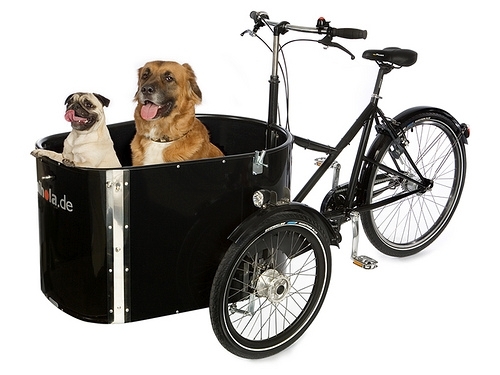But what’s driving the investment boom? Why are ebikes so hot right now? What makes a company a good investment, and how does the market differ from Europe vs the US? I sat down with Clement Pointillart, Executive Director of growth-equity fund Verlinvest, and Bailey Morrow, Director of consumer and frontier tech at Silicon Valley Bank, to find out what’s really happening in the world of ebike investment behind the headlines.
Notable ebike investments in 2021
February: Super73 (Netherlands) raised $20M February: Rad Power (US) raised $150M March Rebike (Germany) an ebike reseller company, raised $10M April: Dott (Netherlands) micromobility raised $80M to roll out ebikes June: Vässla (Sweden) raised $11M September: Dance (Germany) raised $16.5M September: VanMoof (Netherlands) raised $128M October: Rad Power (US) bikes raised $154M
And it’s not only ebikes for purchase by consumers raising money.
March: Lime (US) micromobility raised $50M October: Tier micromobility (Germany) raised $ 200M
What’s driven the massive uptick in ebike investment?
Both Pointillart and Morrow attribute the mammoth increase in ebike investments to several factors:
COVID-19
COVID-19 got people back on their bikes to reduce their time spent on public transport. Cities made cycling safer: London introduced temporary cycling lanes, and New York limited seven miles of streets to pedestrians and cyclists. Pointillart asserts:
Government and employer efforts
Legislative and infrastructural changes in the US mean that ebikes are no longer classified as motor vehicles, and can therefore be ridden on the road. In February, an E-BIKE act introduced a 30% US federal tax credit for electric bicycle purchases. Either you believe that fundamentally, Americans will never hop on an ebike for whatever reason or you need to believe in a catch up that will that will happen. And COVID has been to me the perfect catalyst to stimulate that adoption curve. COVID-19 has been a tremendous accelerator, the trend that was latent, but that was about to explode. Now, you’re seeing, especially in the US, infrastructure deals in road bike infrastructure, allowing more and more people to take their bikes to work. Pointillart also sees a trend of ebike purchases or subsidized by employers to aid employee retention.
Battery innovation
Both agree that battery innovation has also driven the acceleration of interest in ebikes, with batteries faster to charge, stronger, lighter, and longer-lasting than ever before. — Companies like Cowboy are leading the charge for fast long-life batteries.
A new kind of consumers
Changes in consumer behavior are also responsible for ebike investments. According to Morrow, there’s a significant millennial trend where “the next generation of consumers are buying fewer cars and have less desire to own big purchases like houses. They prioritize sustainability as a lifestyle choice.”
What’s the reason for all the investment in direct-to-consumer ebikes over micromobility?
While micromobility continues to attract funding, the direct-to-consumer market has several upsides. Morrow asserts: With micromobility, you’re not tied to a brand. It’s about whatever is closest to you and convenient. There’s no brand loyalty. With a VanMoof or a Cowboy, you are building brand loyalty. Further, there is a much higher margin from a standalone purchase of ebikes. Micromobility ebikes also have problems with a decrease in lifetime value and low resale value. Morrow also notes that investing in consumer bikes takes out the political challenge of working with local governments that that can take away your city operating permit for various reasons, like bikes incorrectly parked and bike rider behavior.
What kinds of factors make investors put their money towards one ebike company over another?
I asked Pointillart what makes an investor choose a brand. He explained: He gave the example of companies offering group bike tours every weekend to build a community around their brands. “Creating community creates a feeling of belonging, that will create stickiness, and will create positive word of mouth.”
The importance of localization in the direct-to-consumer market
According to Morrow, your local market is critical: Pointillart believes: So there’s a lot of growing pains, thinking about how you keep the brand integrity and keep the customer happy.
America remains the holy grail for ebike investors
Expansion to the US is the next step for many ebike companies. Morrow explains: If you’re just competing online without much product differentiation, that’s where we get a little worried about the longevity of the model to generate profits. And to me, I’m most excited about a continuation of the retail with smart integration of direct to consumer selling. She notes VanMoof’s intention to ship 10 million bikes and believes: Investor interest in ebikes shows no sign of waning. It’s a highly competitive market and it will be interesting to see how brands use their funds for R&D and to cement brand loyalty. Additionally, I think we can expect to see a substantial amount of M&A activity in the first half of 2022. When you see companies get to the billion-dollar mark, they have figured out how to jump borders.




